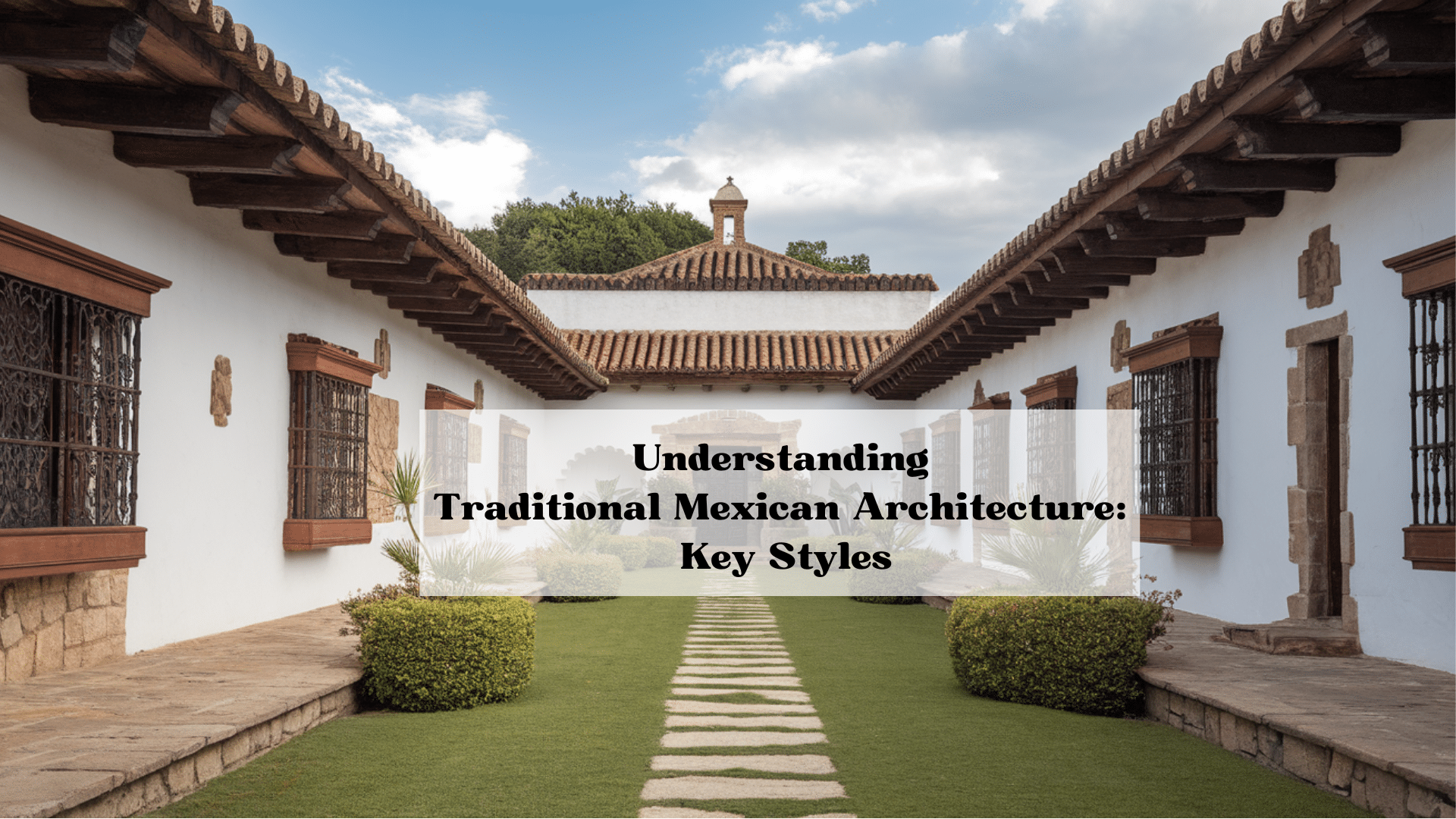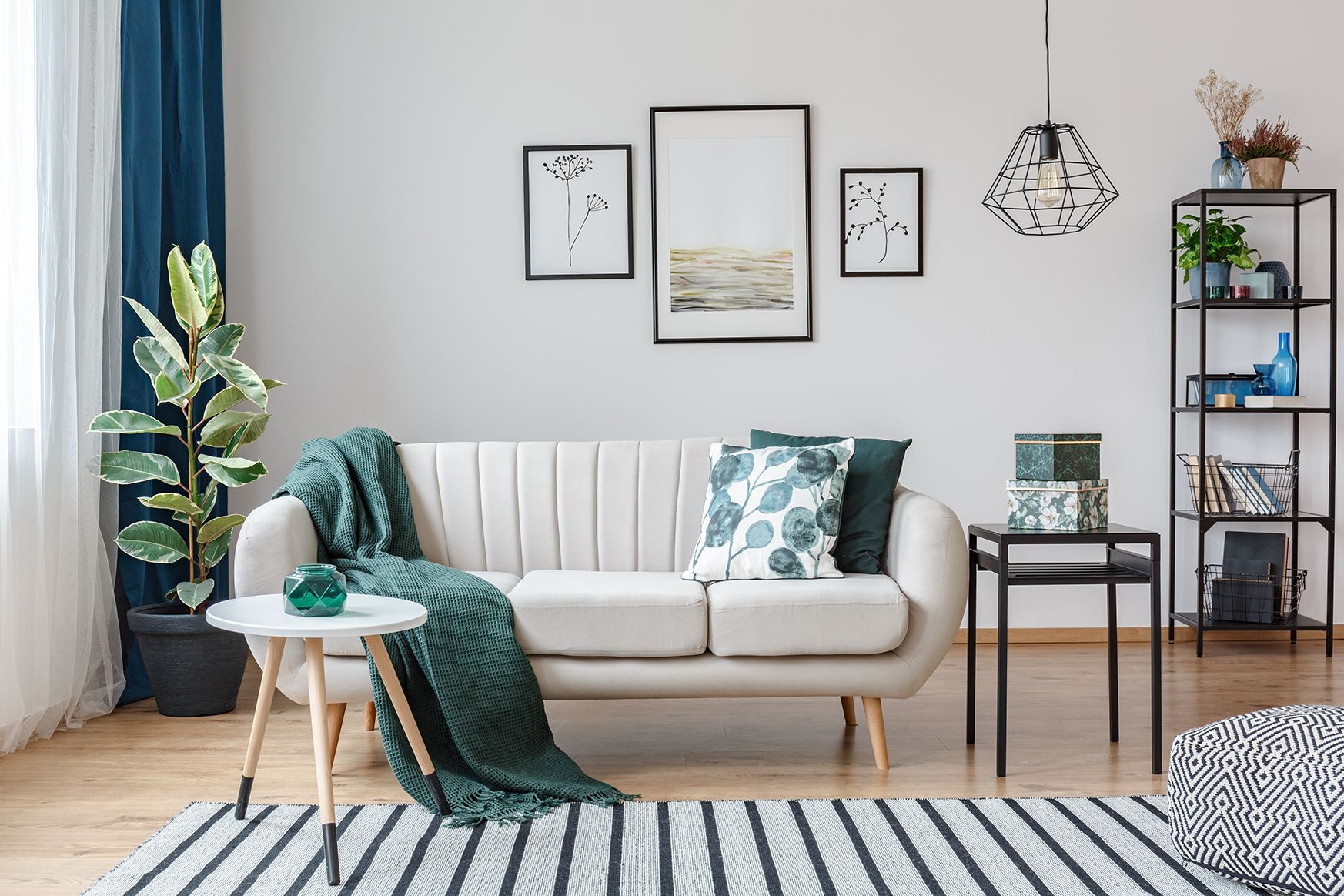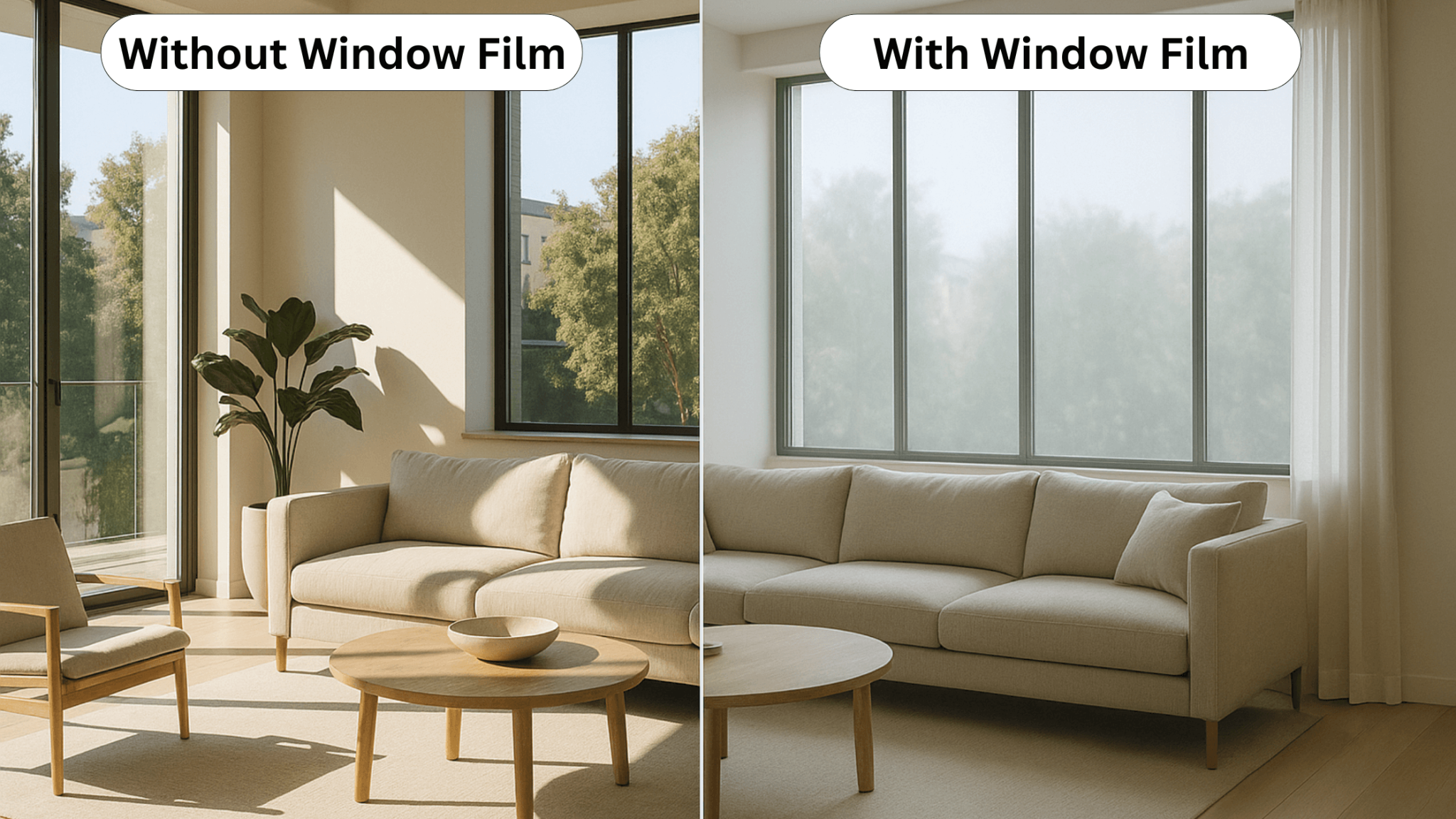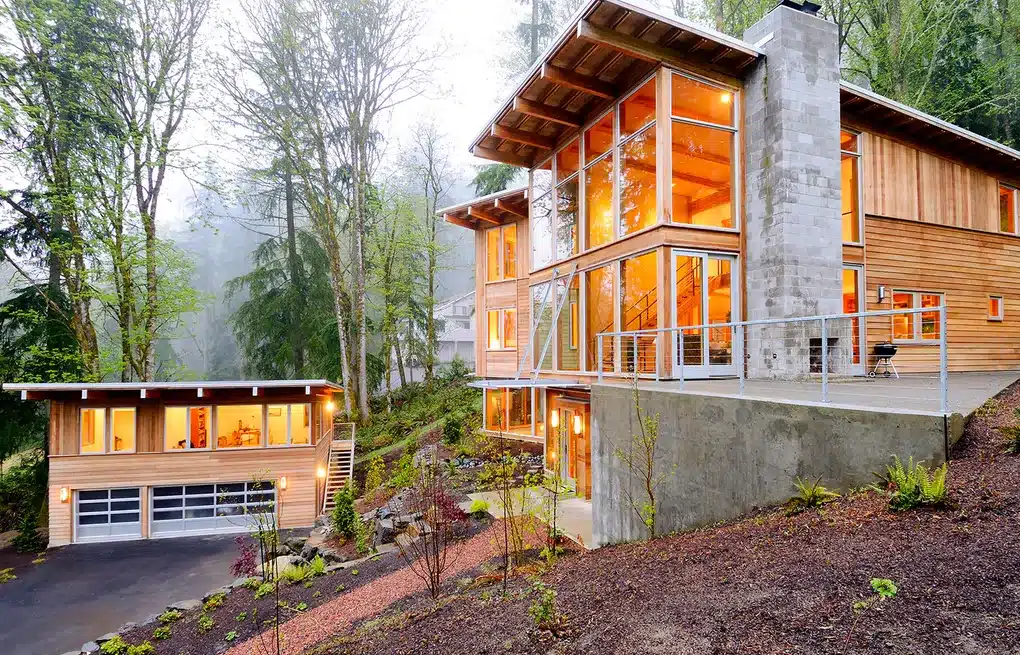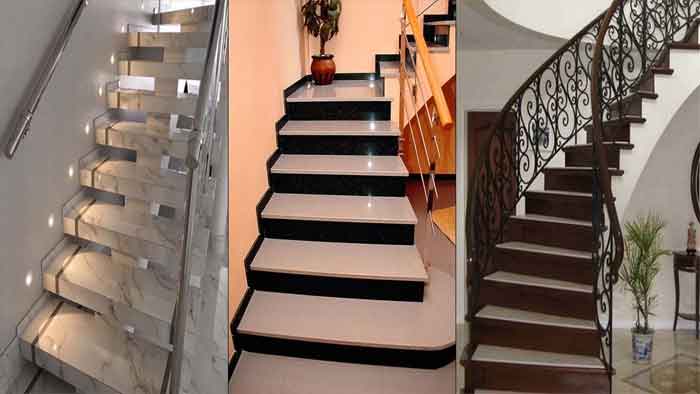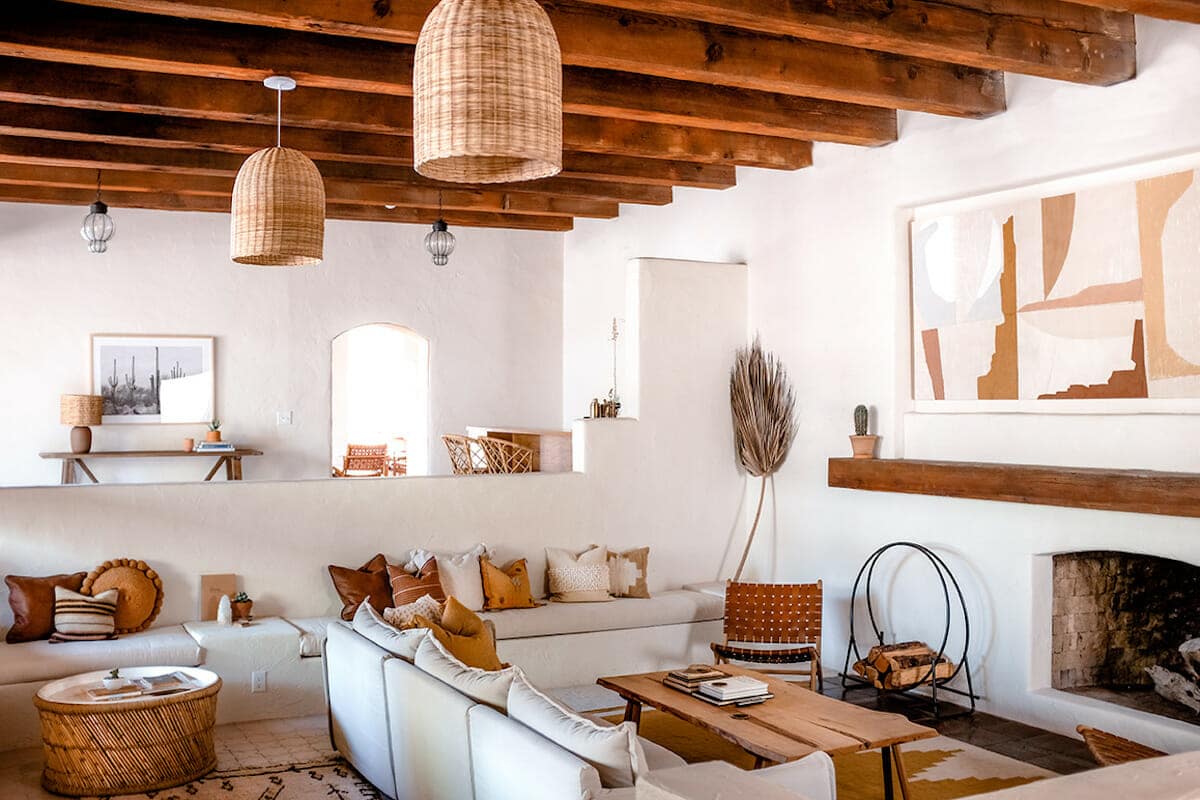Traditional Mexican Architecture: Key Styles and Examples
Mexican architecture tells a story of cultural blending that spans centuries.
When Spanish settlers arrived in the 16th century, they brought their building methods and combined them with the knowledge of local people.
This mix created a unique style that you can still see today across Mexico.
The buildings show clear signs of both worlds—thick walls that keep homes cool in hot weather, open courtyards where families gather, and bright colors that bring life to neighborhoods.
From grand homes on old farms to charming town buildings, Mexican architecture offers something special.
As we examine the different styles and features, you’ll see that Mexican buildings aren’t just structures—they’re expressions of history, climate needs, and cultural values.
Key Elements of Traditional Mexican Architecture
The beauty of Mexican building styles comes from key features that serve both useful and pleasing purposes.
These elements have endured because they work well with the local weather and look good, too.
1. Thick Adobe and Stucco Walls
Mexican homes often have thick walls made with adobe or finished with light stucco.
These walls aren’t just for show—they help keep houses cool when it’s hot outside.
The thickness stores coolness and blocks heat, making them perfect for Mexico’s warm climate without the need for modern cooling systems.
2. Red Tile Roofs
The red clay tile roofs you see on many Mexican buildings do more than look pretty.
These tiles help control indoor temperature by allowing heat to escape.
Their rounded shape and natural material also handle rain well, directing water away from the building while adding a warm, earthy tone to the overall look.
3. Open Courtyards
At the heart of many Mexican homes is an open courtyard.
This central space lets fresh air flow through the house and brings in natural light.
Families use these courtyards as places to relax, eat meals together, and meet with friends, making them both useful for comfort and important for family life.
4. Vibrant Colors
One thing that makes Mexican buildings stand out is their bold, bright colors.
Homes might be painted in warm yellows, blues, pinks, or greens.
These colors aren’t chosen by chance—they reflect the lively culture and add character to streets and towns across Mexico.
5. Wooden Beams and Arches
Look up in a Mexican home, and you’ll often see wooden beams across the ceiling.
These beams, along with wooden doors and stone arches, strengthen buildings while creating a warm, natural atmosphere.
Arches smoothly connect rooms and create covered walkways that offer shade from the sun.
Popular Styles of Traditional Mexican Architecture
Mexican building designs come in several main styles, each with its own story and special look.
These styles show how culture, weather, and history have shaped homes across the country.
Hacienda Style
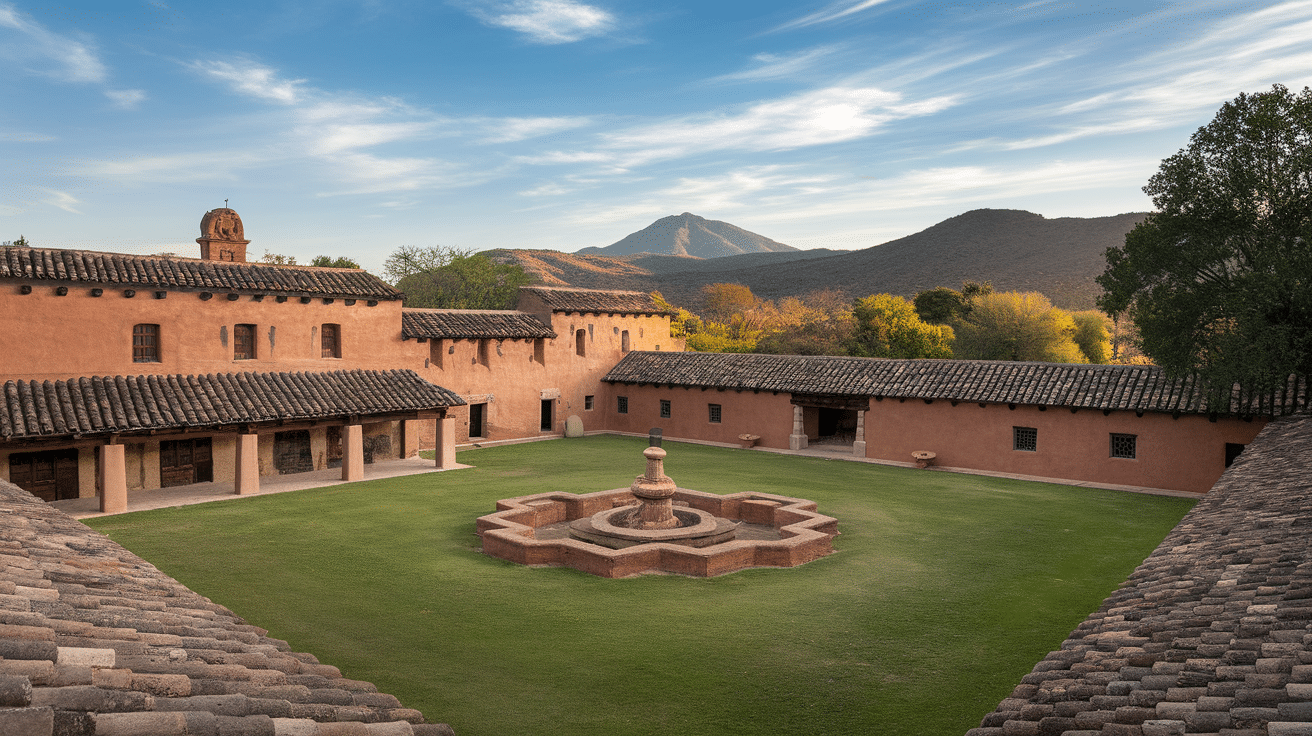
The hacienda-style began in the 1500s on large farm estates during colonial times.
These houses have a country look with clay tile roofs and rooms built around a main courtyard.
The walls are very thick with a smooth stucco finish, which helps control the inside temperature.
You’ll notice wooden doors, ceiling beams that show, small windows, and beautiful arches that give these homes their special charm.
Colonial Style
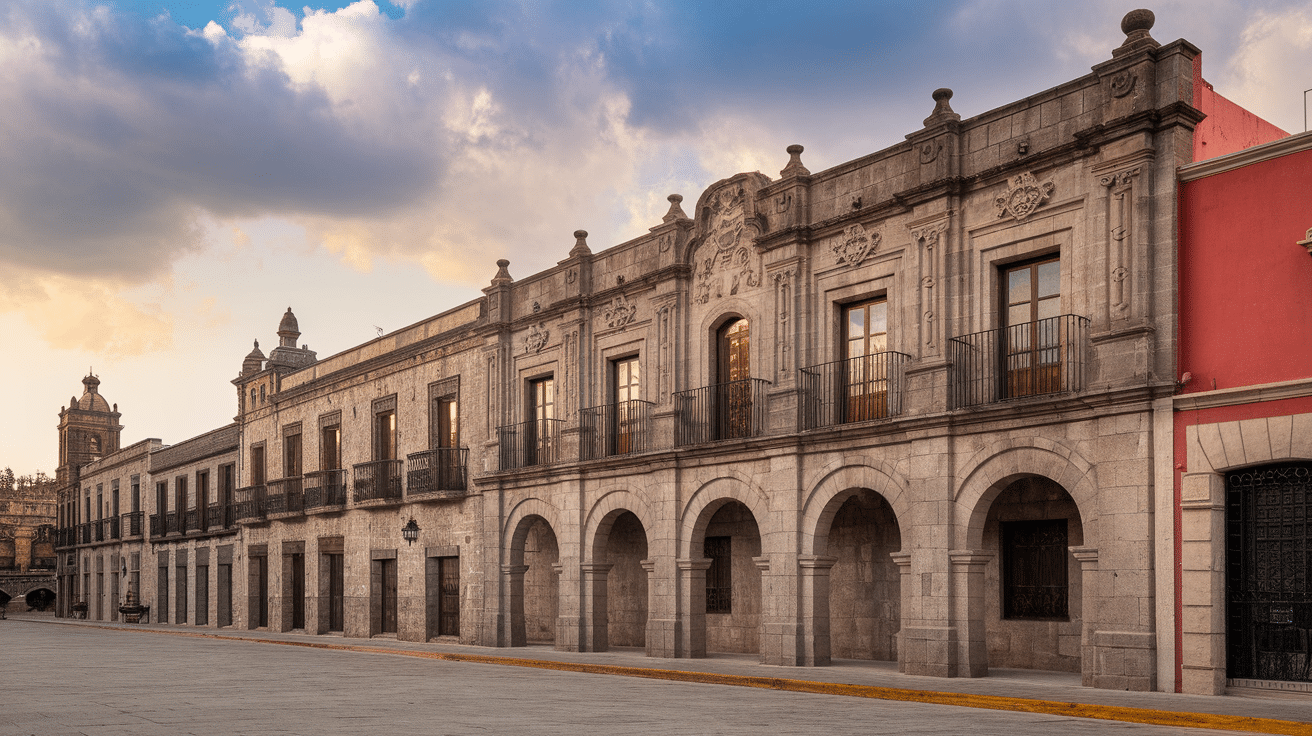
When Spanish settlers came to Mexico, they brought their building ideas but mixed them with local building know-how.
This blend created the colonial style, which can still be seen in towns like San Miguel de Allende, Morelia, and Taxco.
These buildings use stone, brick, and stucco, with pretty details like arches, balconies, and detailed stonework that show Spanish roots with a Mexican twist.
Vernacular Architecture
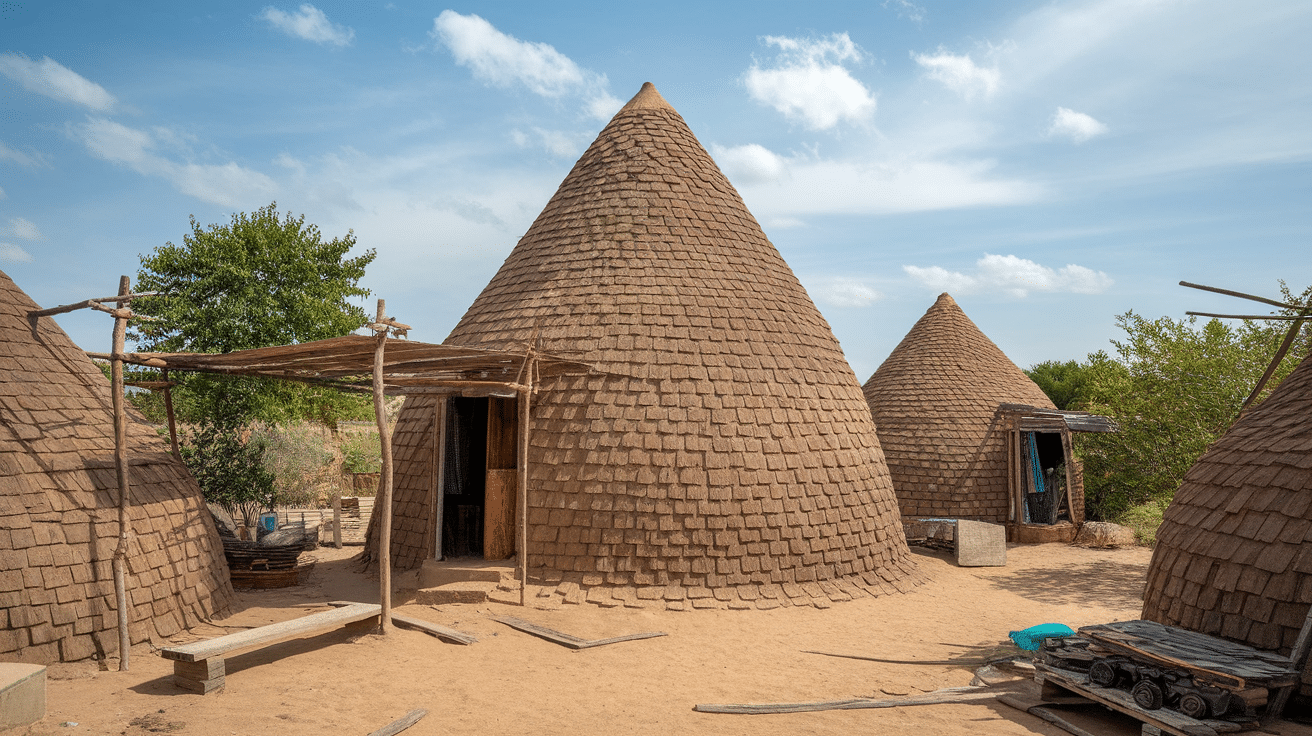
This style is how regular people built homes using what they had around them.
It shows the real connection between people, their surroundings, and their traditions.
These buildings use materials found nearby and building methods that work well with the local weather and land.
You might see round, square, or long houses with cone-shaped or pyramid-like roofs.
Often, rooms are set up around an inner yard, much like their fancier cousins.
Baroque and Churrigueresque Influence
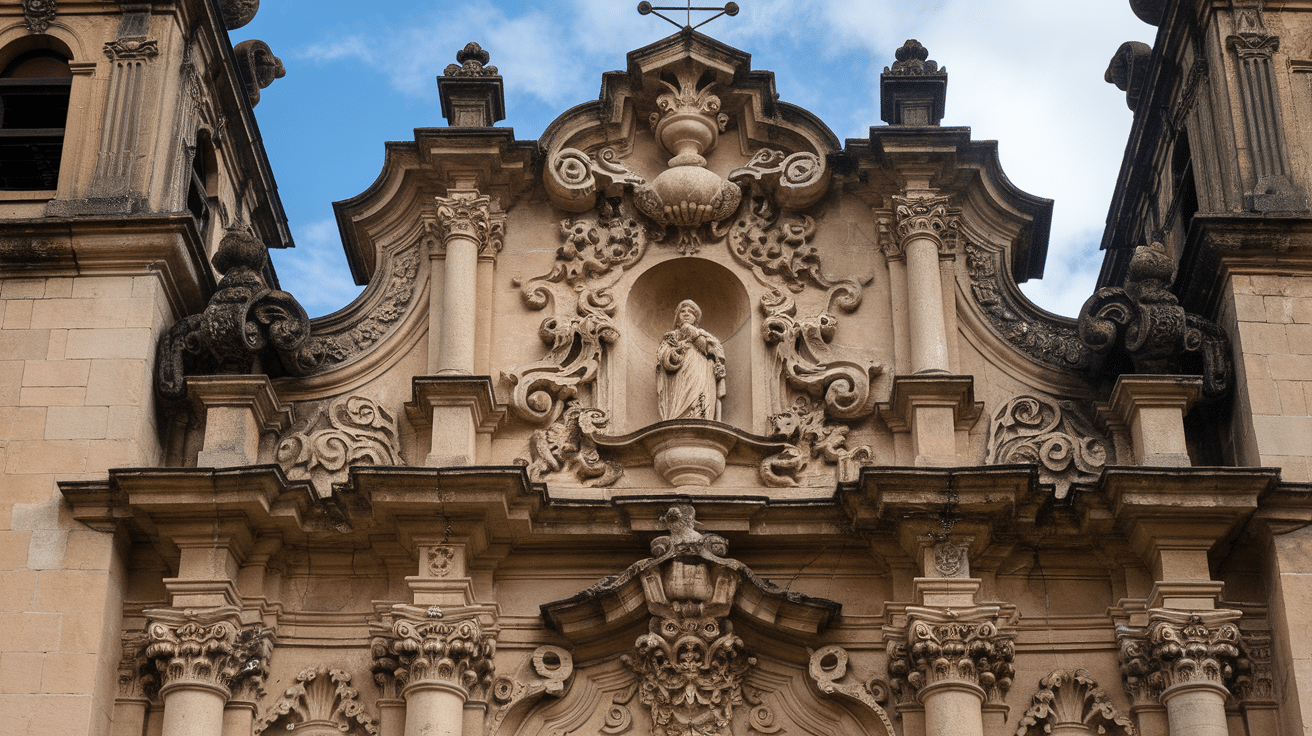
The Baroque art movement left its mark on Mexican buildings, too.
The Mexican take on this style, called Churrigueresque, goes all out with fancy details.
This ultra-detailed style has very complex stone carvings and an almost over-the-top feeling.
It is mostly found in churches and big public buildings, where it showcases the skills of Mexican stone workers and artists.
The Evolution of Mexican Architecture
Mexican building styles have changed over time, blending old and new ideas while keeping their unique character.
Indigenous Influences
Before Spanish arrival, ancient Mexican cultures like the Maya and Aztecs had their own building styles.
Their knowledge about working with local materials and building for the Mexican climate lives on in today’s designs.
Their influence can be seen in room arrangements, open spaces, and how buildings interact with the natural environment.
Spanish Colonial Impact
Spanish settlers in the 1500s brought European building ideas, including stone arches, columned courtyards, and ornate church designs.
They introduced new building materials and methods, but local builders adapted these ideas to fit Mexican conditions, creating a unique blend rather than a replacement of regional styles.
Modern Adaptations
Today’s Mexican architecture often combines traditional inspiration with newer materials.
Modern homes might feature clean lines alongside classic courtyard layouts.
Designers use glass, steel, and concrete while maintaining traditional elements like tile roofs or thick walls, preserving the spacious feeling and outdoor connection that makes Mexican architecture special.
Famous Traditional Mexican Architecture
San Miguel de Allende
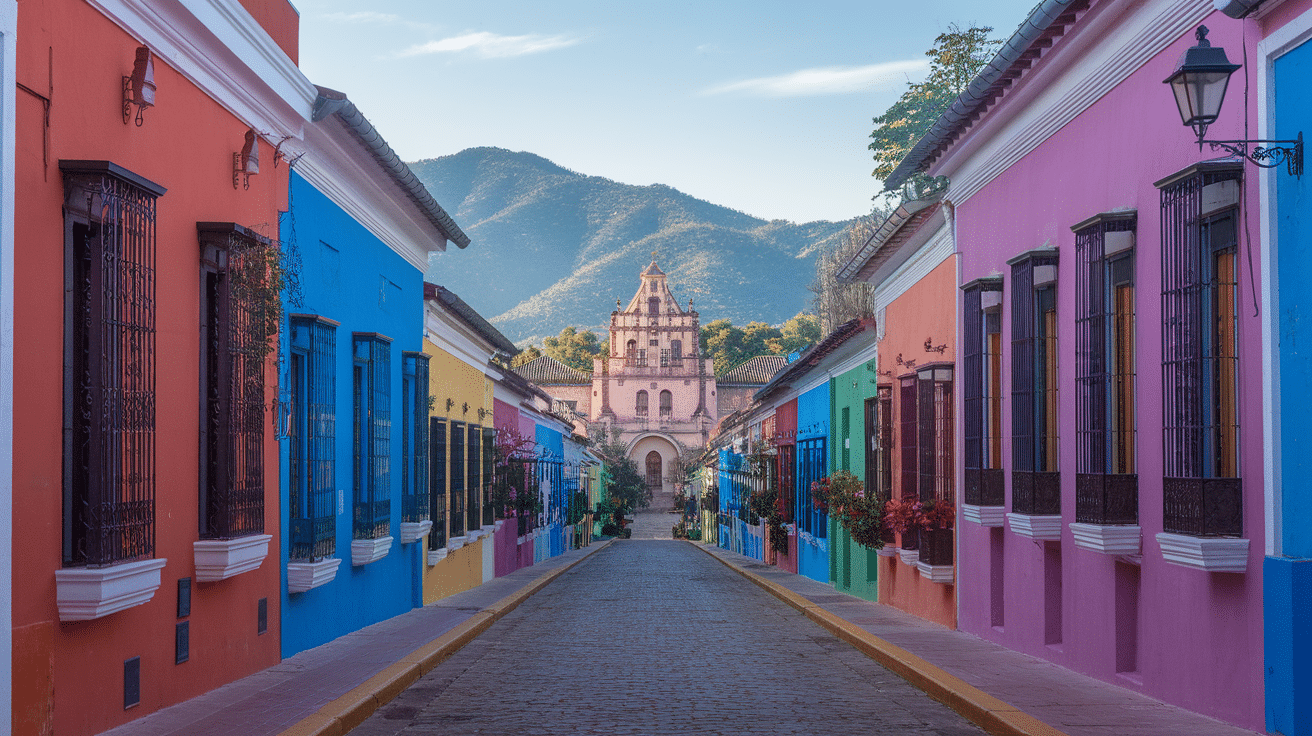
San Miguel de Allende has one of the best-preserved colonial centers in Mexico.
Walking its streets, you’ll see buildings with smooth stucco walls in warm colors, detailed stonework, and hidden inner courtyards behind wooden doors.
The town is famous worldwide for maintaining its authentic Mexican character.
Taxco and Morelia
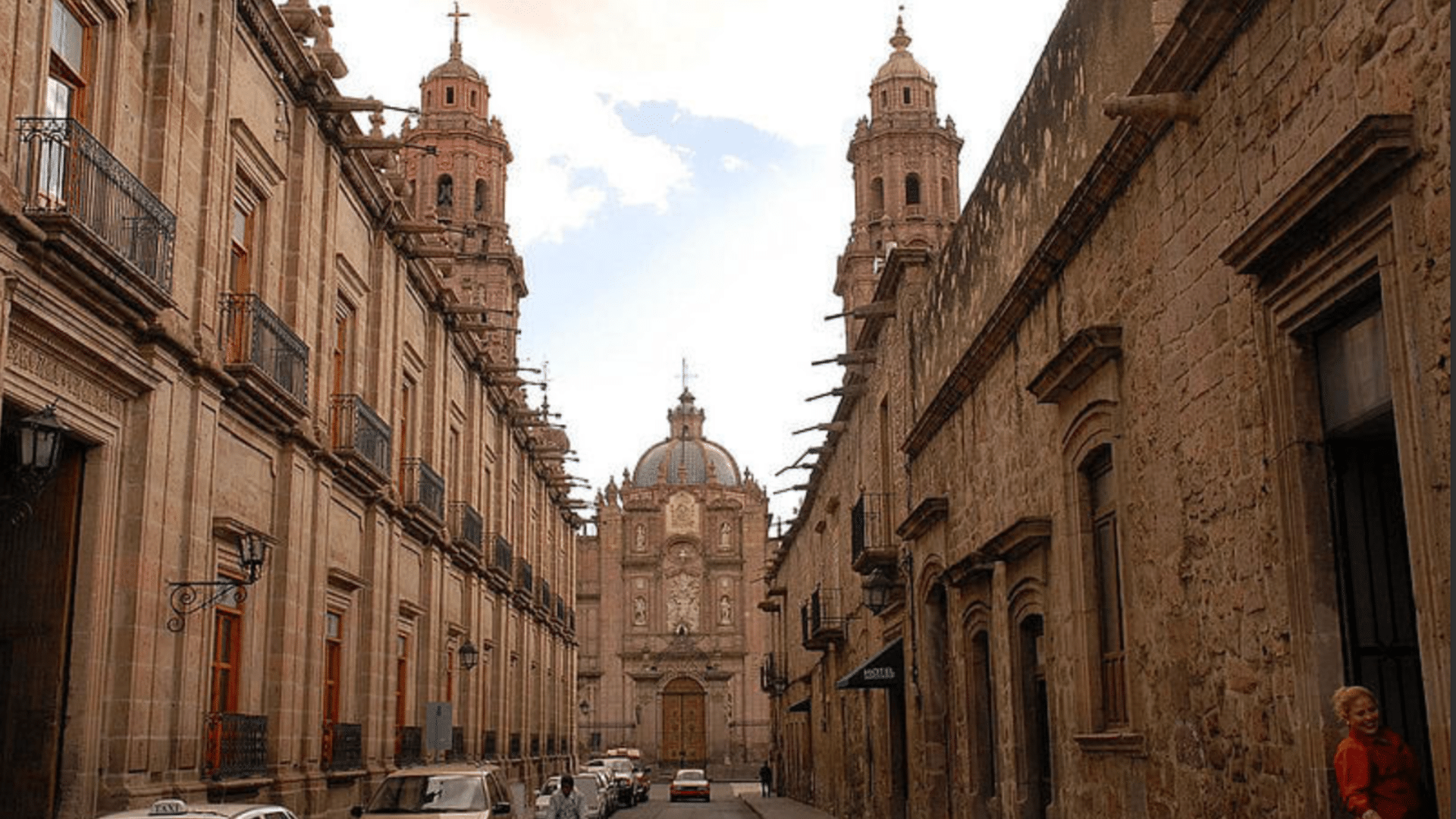
Taxco’s hillside setting features winding streets with white buildings topped by red tile roofs against green mountains.
Morelia is known for pink stone buildings that glow warmly at sunset.
Both cities preserve their colonial-era structures, which feature stone arches, small balconies, and central plazas that showcase Mexican architectural skill.
Historic Hacienda Locations
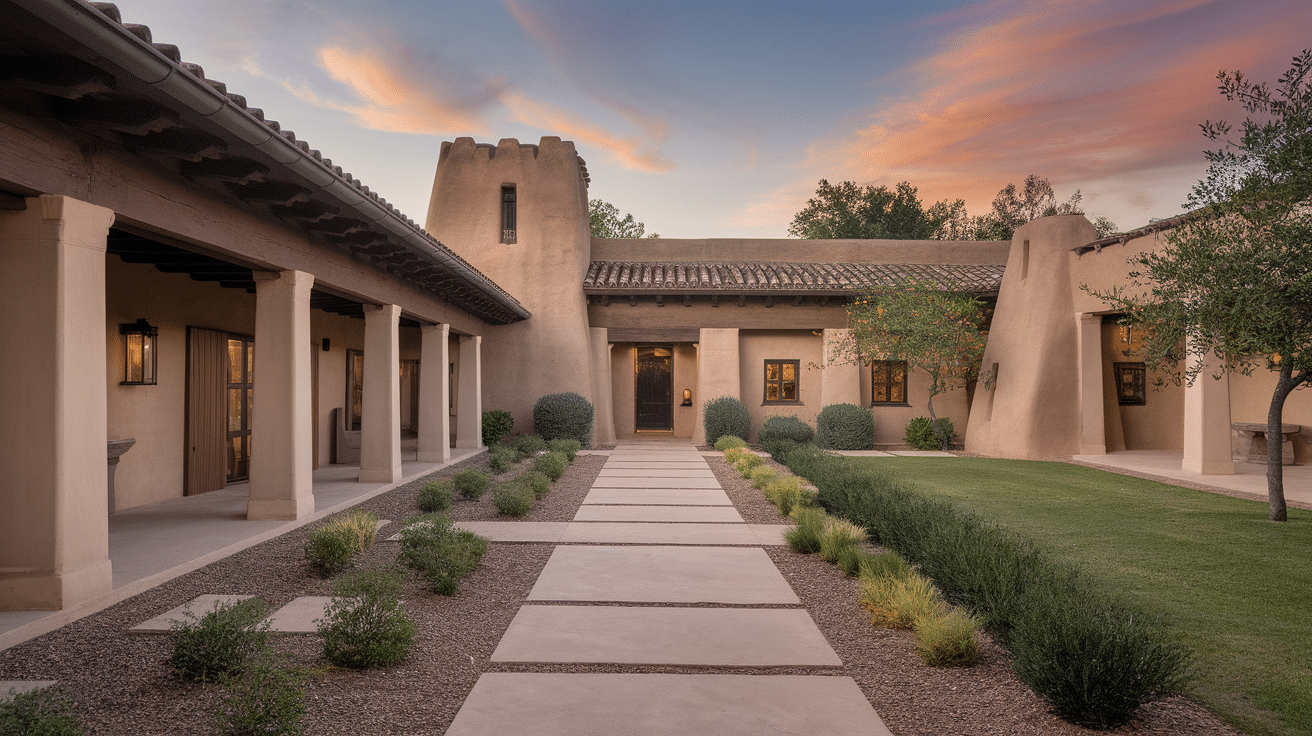
Old haciendas throughout Mexico tell the story of rural life and farming history. Many former estate houses have been restored as hotels or museums.
With large courtyards, thick walls, wooden beams, and sweeping arches, these buildings demonstrate how practical needs and beautiful design worked together in Mexican rural architecture.
Mexican Architecture and its Influence on Modern Design
Today’s Mexican architects honor traditional methods while creating new designs for modern life.
Combining Tradition with Modernity
Current Mexican designers take ideas from the past and apply them in fresh ways.
New homes might feature modern layouts while including elements like central courtyards, covered walkways, thick walls, or small windows that control light and heat.
This blend creates buildings that connect to Mexico’s history while meeting today’s needs.
Use of Local Materials
A key trend in current Mexican buildings is using materials from nearby sources. Builders select stone from local quarries, regional clay, and wood from Mexican forests.
This approach helps the environment by reducing shipping, supports local craftspeople, and creates buildings that truly belong in their settings.
These materials connect new structures to Mexico’s building history, where people traditionally used what the land provided.
Color and Decoration in Mexican Architecture
Color and decoration bring Mexican buildings to life, adding warmth and character that makes them stand out.
Talavera Tiles
Hand-painted ceramic tiles, known as Talavera, are a hallmark of Mexican architectural decoration.
These beautiful tiles feature patterns in blue, yellow, green, and orange on white backgrounds.
Building owners use them to decorate walls, floors, kitchen counters, and even entire building facades.
Each tile is made by skilled artisans using methods passed down through generations.
The tiles not only make buildings look pretty but also tell stories about Mexican craft traditions and artistic skills.
Bright Facades
One of the most noticeable things about Mexican towns is how colorful they are.
Homes and buildings might be painted in sunny yellows, rich blues, warm pinks, or deep oranges.
These bright colors create streets full of life and personality.
Building owners often choose colors that have meaning to them or that make their homes easy to find.
The result is neighborhoods where each building has its own identity while all together creating a lively, welcoming feeling that reflects the warmth of Mexican culture.
Maintenance of Historical Mexican Architecture
Preserving Adobe Structures
Adobe buildings feature thick walls made from earth, water, and organic materials that naturally control temperature.
Check adobe walls regularly for cracks or water damage, especially after rain.
Fill small cracks with matching adobe mix. Ensure proper roof drainage to prevent water damage.
Apply lime-based plaster every few years as protection.
Keep the area around foundations clear of plants to prevent moisture buildup and root damage.
Restoring Colonial Homes
Research before starting any colonial home restoration. Study original materials and construction methods to maintain historical accuracy.
Use matching materials like stone, brick, and authentic stucco finishes.
Clean and restore original woodwork rather than replacing it.
Research historical paint colors specific to the region. Preserve original features like Talavera tiles or find exact matches when needed.
Consult with historical building experts when adding modern utilities to avoid damaging the structure’s integrity.
Conclusion
Mexican architecture has strong cultural roots. It mixes local building methods with Spanish styles, creating a special look.
Colored earth walls tell stories, and so do detailed tiles.
Open courtyards speak of our past. Homeowners can use these ideas today.
They can add warm colors. They can use natural materials. They can connect inside with outside spaces.
This makes homes feel both old and new. These homes have real meaning. They honor the past while working for today.

